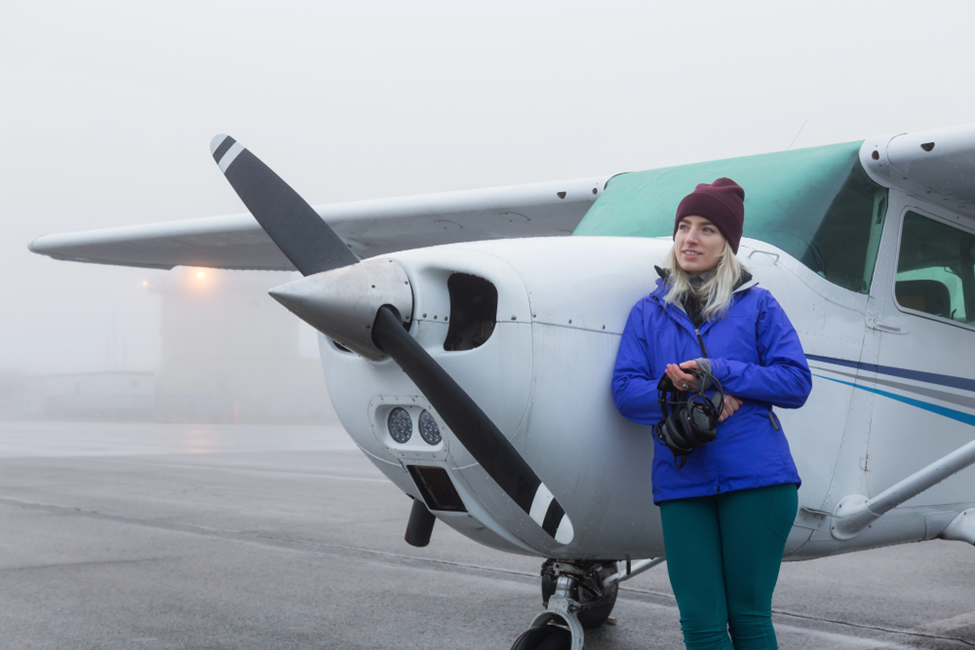Winter Flying Supplies Checklist for Pilots
Flying during the winter months presents unique challenges for pilots. Cold temperatures, icy conditions, and limited daylight demand additional preparation to ensure a safe and comfortable flight. Here’s a checklist of essential supplies and accessories every pilot should have when taking to the skies in winter.
1. Insulated Gloves and Jacket
Maintaining warmth while ensuring dexterity is crucial for winter flying:
- Gloves: Choose thin, insulated gloves that allow for precise movement of instruments and controls. Touchscreen-compatible gloves are especially useful for operating electronic devices.
- Jacket: Opt for a lightweight, insulated jacket that provides warmth without restricting movement. Look for windproof and waterproof materials to guard against unpredictable weather during pre-flight inspections.
2. Pre-Flight De-Icing Tools
Ice accumulation can significantly impact an aircraft’s performance:
- De-Icing Spray: Keep a portable de-icing spray handy for quick removal of frost from surfaces like windshields and control surfaces.
- Wing Covers: Consider investing in wing covers to prevent ice build-up on critical surfaces when the plane is parked outdoors.
3. Cold Weather Survival Gear
Winter flights over remote areas require preparation for emergencies:
- Thermal Blanket or Sleeping Bag: Compact and lightweight, these items can be lifesavers in the event of an off-airport landing.
- Emergency Locator Beacon (ELT/PLB): Ensure your emergency locator transmitter is functional and consider carrying a personal locator beacon for added safety.
- First Aid Kit: Include hand warmers, fire-starting tools, and high-calorie energy bars in your kit for cold-weather survival.
4. Winterized Flight Bag Essentials
Keep your flight bag stocked with additional winter-specific items:
- Batteries: Cold temperatures can drain batteries quickly, so carry spares for headsets, flashlights, and other essential electronics.
- Flashlight: A high-quality LED flashlight with a strobe function is useful for pre-flight inspections in low-light conditions.
- Charts and Paper Backup: Icy weather can interfere with electronics, so always have paper charts and a manual flight plan as backups.
5. Aircraft-Specific Items
Preparation starts with your aircraft:
- Engine Preheater: Ensure your engine preheater is functional to warm the engine oil and reduce startup strain.
- Winterized Oil: Use oil specifically formulated for cold temperatures to ensure proper lubrication during flights.
- Fuel Additives: If flying in freezing temperatures, use fuel additives to prevent fuel line freezing.
6. Hydration and Nutrition
Cold air can be deceptively dehydrating, and winter flights often require longer preparation times:
- Insulated Water Bottle: Keep water in an insulated bottle to prevent freezing.
- Snacks: Carry high-energy snacks like nuts, protein bars, or dried fruit for sustenance.
Final Thoughts
Winter flying can be a rewarding experience, offering stunning landscapes and quieter skies. However, the cold season’s unique challenges demand careful preparation. By equipping yourself with the right supplies—from insulated gloves and jackets to survival gear and de-icing tools—you can ensure a safe and enjoyable winter flying season. Stay warm, stay prepared, and enjoy the beauty of winter from above!
– Written by Jack Vale
